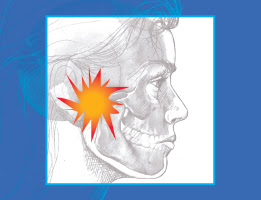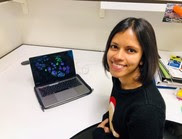

NIDCR News
CDC’s COVID-19 Guidance for Dental Settings

Dental health care personnel can find COVID-19-related information on the CDC’s Division of Oral Health website, which offers guidance and resources for clinics and health care facilities and recommendations for responding to COVID-19 in dental settings.
|
NIH Offers COVID-19 Information and Resources

An NIH COVID-19 microsite offers a curated collection of information and resources about the status of the outbreak, including the latest CDC information and guidance, NIH research on the novel coronavirus, information for NIH applicants and recipients, NIH guidance on travel and meetings, and other federal government resources. The site also provides a link for users to sign up for COVID-19 email updates from NIH.
|
NIDCR Statement on National Academies TMJD Report

The National Academies of Sciences, Engineering, and Medicine on March 12 released a report, “Temporomandibular Disorders: Priorities for Research and Care.” NIDCR and the NIH Office of the Director commissioned the study to address the current state of knowledge about TMJD research, provider education and training, safety and efficacy of clinical treatments, and TMJD-associated burden and costs. NIDCR’s acting director, Lawrence A. Tabak, DDS, PhD, said in a statement that the report makes clear that despite advances in the field, significant gaps remain in our understanding of the biological mechanisms underlying these complex, painful conditions affecting the jaw. In January 2020 Dr. Tabak announced the development of a TMJD Multi-Council Working Group to be made up of advisory council members from NIDCR and other NIH institutes and centers with expertise relevant to TMJD research. The working group will review the report and its recommendations and work to develop strategies that NIDCR and NIH can use to better support research efforts to generate a strong knowledge base and advance TMJD research and care.
|
Martha J. Somerman Lauded at Retirement Party

In December, the NIH community celebrated the many contributions of Martha J. Somerman, DDS, PhD, who served as NIDCR director from 2011 through 2019. “She has advanced the science and worked tirelessly on behalf of the dental research community and a whole generation of dental professionals,” said NIH Director Francis S. Collins, MD, PhD. Among the accomplishments he highlighted were her commitment to training the next generation of oral health researchers, her push for greater diversity in the scientific workforce, and her efforts to establish the Dental, Oral, and Craniofacial Tissue Regenerative Consortium to advance development of regenerative therapies.
|
NIDCR Council Meeting Highlights Data Science

The National Advisory Dental and Craniofacial Research Council meeting held January 29 on the NIH campus featured several presentations about data science and its role in research supported by the institute. Topics ranged from artificial intelligence to the challenges of integrating dental and clinical records to machine learning for the management of data sets. The next council meeting takes place May 19, 2020.
|
NIDCR Grand Rounds Marked 35 Years of Sjögren’s Syndrome Research

NIDCR hosted a special grand rounds in November to celebrate progress in Sjögren’s syndrome research since the founding of the NIDCR Sjögren’s Syndrome Clinic 35 years ago. Among the speakers were NIDCR scientist emeritus Bruce Baum, PhD, who pioneered the first-ever salivary gland gene therapy tested in humans. Other presenters included NIDCR-supported researchers and patient advocacy representatives, who described their work to advance Sjögren’s syndrome research and awareness.
|
Mentoring Is Key to New NIDCR Fellowship

Surangi Perera, PhD, NIDCR’s first Sang-A Park Memorial Intramural Postdoctoral Fellow, has brought her affinity for the unknown and a passion for mentoring to the institute. Perera works in the lab of Laura Kerosuo, PhD, and focuses on the mechanisms that control the fate of neural crest cells, in particular those that will become neurons and glia in the cranial nerve ganglia. She comes to NIH from the University of Cambridge, where she conducted her dissertation research on olfactory ensheathing cells, which derive from the neural crest and show promise for treating spinal cord injuries.
|






















.png)











No hay comentarios:
Publicar un comentario